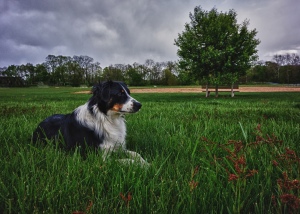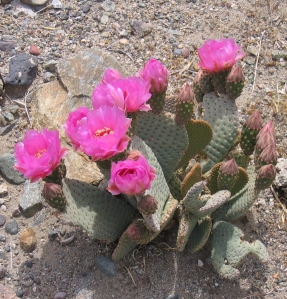It’s July. Areas of the northern hemisphere that receive summertime rain are experiencing the height of the growing season, and ecologists, conservationists, and land managers make their summertime hay by vigorously pursuing field activities while plants and critters are at their most active. Mosquitos thrive, fish jump, and prairie grasses grow taller by the minute. But summer is not the prime growing season everywhere in the world.
In southern California grasslands, which enjoy a Mediterranean climate, the growing season ended months ago for most annual plants. The prime time for ecologists to botanize has past; our hills are now a lustrous gold, spring’s crop of annual grasses and forbs long since senesced. The summer dormancy observed in California’s grasslands can also be observed in its deserts. Holding the record for the hottest place on Earth at 134° F, Death Valley’s summers are definitely not the region’s “growing season” (except if you are talking about the growth of heat-seeking tourists, perhaps).
As the desert heats up in the summertime, something interesting happens. Warm air rises and creates pockets of low pressure, drawing air from the coastal areas to the west. A strong high pressure system over the ocean can allow moist, cool marine air to drift onshore, and before you know it the coast is socked in: foggy days, fleeting glimpses of late afternoon sun, and infuriating flight delays are legendary summer realities along the California coast. Who hasn’t heard the quip (erroneously attributed to Mark Twain), “the coldest winter I ever spent was a summer in San Francisco”? This condition is called June Gloom, despite the fact that coastal areas can be overcast, misty, or downright foggy much of late spring and early summer, not just in June alone. So, while the desert experiences temperatures in the 120’s, the coast can be a damp and chilly 65° F.
Whole ecosystems have evolved to cope with these disparate summer climates. Along the foggy coast, 20-40% of the total water used by redwoods comes from fog input (as opposed to rain), and for other maritime chaparral plants and some lichens, fog is the primary source of water in the dry season. Also, people in other arid yet foggy areas have developed ingenious ways of capturing the moisture from the air to use as drinking and irrigation water. Outside of the fog belt, summer dormancy and other strategies of heat and drought avoidance allow plants to survive the hot, dry conditions that characterize California’s inland areas and deserts.
Despite the mercury-bursting temperatures, this is the time of year that I choose to visit a site less than 25 miles from the hottest place on Earth. I go to monitor several properties along the Amargosa River, which flows through the Mojave Desert to terminate in Death Valley when enough rain occurs in the winter. When I visit, the river is a clear, narrow stream rather than a raging, flood-swollen torrent. The summer gives me a chance to appreciate the river as a true riparian oasis—an area providing habitat for fish, plants, and hundreds of bird species. The site seems unreal, surrounded by a vast desert shimmering in triple-digit heat. It is not the heat itself, but the miracle of respite from the heat, that draws me to this place each summer.
And if I get too hot, I can always drive to the beach.



